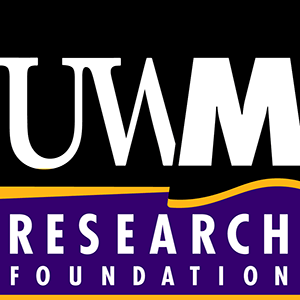The UWM Research Foundation supports the licensing of technologies developed at UWM and encourages companies interested in licensing UWM technologies to contact us about further exploration of licensing and/or partnership opportunities. The UWMRF helps our partners achieve success by ensuring that UWM technologies are broadly and successfully commercialized. The UWMRF has flexibility in how we license technologies to meet the business needs of our partners.
Licensing Guidelines
what can be licensed?
The UWM Research Foundation works to license patents, copyrights, and know-how that are the products of nearly $60 million in annual UWM research expenditures. However, because sharing of information (through publication) is core to the University’s mission, we cannot include trade secrets as part of a license agreement.
field of use
Licenses at UWMRF are executed on a field-of-use basis. This means the technology is licensed according to a company’s intended use, application, or anticipated market. We work with you to determine a field of use that best matches your company’s business plan and commercialization strategy.
exclusive vs. nonexclusive
UWMRF licenses may be either exclusive or nonexclusive. In either case, the license will be granted for a specific field of use. Even exclusive licenses may be licensed to more than one company, provided each licensee is operating in a separate, distinct field of use. Nonexclusive licenses are typically less expensive to obtain than exclusive licenses.
sublicensing
UWMRF can offer sublicensing rights to companies with a business and commercialization plan that requires the ability to offer rights to third parties. Licenses that include the right to sublicense to others also include financial terms for sublicensing revenue that is based on the commercialization of the technology by a sublicensee. In addition, the license requires that the sublicenses granted by the licensee include specific provisions that are part of the license agreement.
financial terms
All UWMRF license agreements have similar financial components. These components can include an up-front execution fee, patent reimbursement, annual minimum payments and/or milestone payments,an annual minimum royalty, and running royalties as a percentage of net sales revenue. When developing these figures, we will work with you and take into account your commercialization plan to define a license structure that makes the most sense for your business.
We have significant flexibility on structuring the financial component of our licenses. For instance, it is not uncommon to have fees that are staged in order to be aligned with your company’s cash-flow needs. We try to work with you to develop commercialization milestones that make sense and are practical for your business. The UWMRF must ensure that there is a fair exchange of consideration for university inventions.
minimum royalties
We have a responsibility to ensure that licensees of UWM technologies are diligent in their commercialization efforts. For this reason, annual minimum royalties are required in license agreements. These are annual fees paid to keep the license in place when product sales do not reach a minimum threshold. If sales were to reach a level at which the running royalty exceeds the minimum royalty, then your company would pay the larger amount. An annual minimum royalty is not assessed in addition to a royalty on sales.
running royalty rates
We are committed to executing license agreements with fair and equitable financial terms. Running royalty rates are determined based on comparable technologies, taking into account the contribution of the UWMRF technology to the commercial success of a product. In contributing UWM technologies to your product, we seek to enhance your products in return for a fair royalty rate so we can be successful together.
patent reimbursement
The commercial value of UWMRF technologies is enhanced by investments in patents. For this reason, we require full cost recovery for patents that we license. In the event a technology is licensed nonexclusively, those patent costs may be divided by the number of licensees of the patents as a Patent Expense Fee.
Start-up Companies
The UWMRF realizes that new start-up companies looking to license a technology most often must reserve cash for the research and development of the technology. We work with start-up companies to format payment plans in a reasonable timeline to allow for adequate cash-flow. UWMRF may take a percentage of equity in a start-up company in lieu of other types of cash payments if the start-up can demonstrate a sound commercialization plan.
Diligence
UWMRF has a responsibility to ensure that licensees work actively to develop/commercialize licensed IP in a timely fashion, and all licenses incorporate some form of diligence provisions to ensure this. Diligence terms for exclusive licensing are much more substantive than for a non-exclusive license. In addition to minimum annual cash payments, they usually include milestone requirements and/or minimum earned royalties. Consequences for the licensee’s failure to meet diligence range from UWRMF’s right to convert an exclusive license to a non-exclusive license or to terminate the license completely.
Commercialization Plan
The commercialization plan is also an important part of our license agreements. It lets us know the timeline for your company to turn UWMRF’s technologies into products available for purchase. We will work with you to define milestones, such as targets for your company’s investment in product development, target time periods for first commercial sales, or targets for sales above a certain quantity. We recognize that each market is different and each company has a unique approach to commercialization, so we welcome your input in developing a commercialization plan that makes sense for your company.

